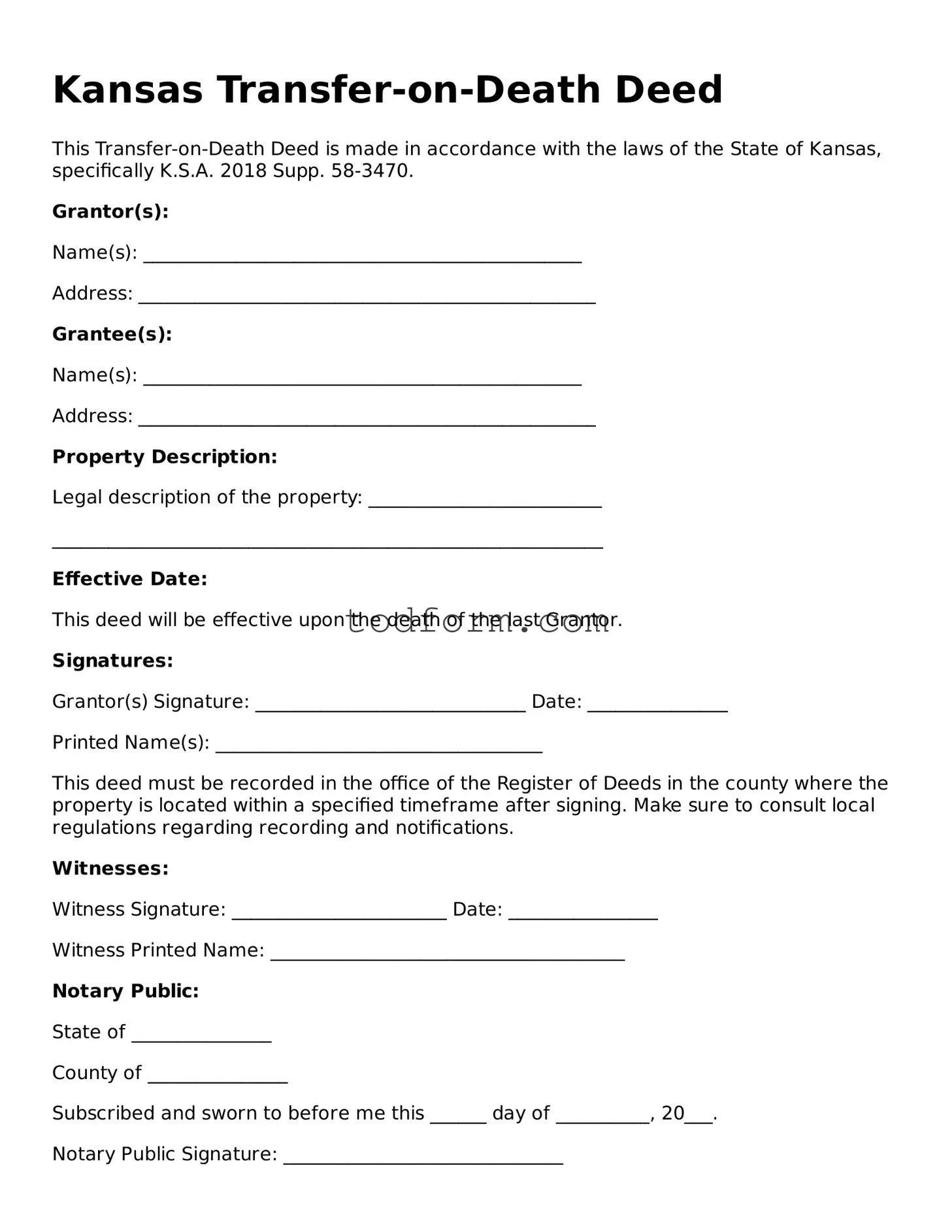The Kansas Transfer-on-Death Deed (TODD) form shares similarities with the Last Will and Testament. Both documents serve the purpose of transferring property upon the death of an individual. However, while a will requires probate, which can be a lengthy and complex process, the TODD allows for a more straightforward transfer of real estate directly to the designated beneficiary. This can simplify the transition of property ownership and avoid some of the costs associated with probate proceedings.
Another document akin to the TODD is the Living Trust. Like the TODD, a living trust facilitates the transfer of assets outside of probate. A living trust can encompass a variety of assets, including real estate, while the TODD is specifically for real property. Both instruments aim to provide a smoother transition of assets to heirs, but a living trust often requires more management and may involve ongoing administrative responsibilities.
The Beneficiary Designation form is also similar to the TODD. This document allows individuals to designate beneficiaries for certain accounts, such as retirement accounts or life insurance policies. Both the Beneficiary Designation and the TODD enable property to pass directly to the named beneficiaries upon the individual’s death, bypassing the probate process. This direct transfer can provide peace of mind and ensure that assets are distributed according to the individual's wishes.
The Joint Tenancy Agreement shares characteristics with the TODD in that both involve property ownership. In a joint tenancy, two or more individuals hold title to a property with rights of survivorship. Upon the death of one owner, the property automatically passes to the surviving owner(s), similar to how a TODD functions. However, the TODD is specifically a deed that can be revoked or altered during the owner’s lifetime, while joint tenancy is a form of ownership that cannot be changed unilaterally.
The Life Estate Deed is another document that bears resemblance to the TODD. A life estate deed allows an individual to retain the right to use and occupy a property during their lifetime, with the property passing to a designated beneficiary upon their death. Like the TODD, this deed provides a means to transfer property without going through probate. However, a life estate involves a retained interest, while the TODD allows for complete transfer of ownership upon death.
Lastly, the Power of Attorney (POA) can be compared to the TODD, although they serve different purposes. A POA grants another person the authority to act on someone’s behalf in financial or legal matters, potentially including the management of real estate. While a TODD focuses solely on the transfer of property at death, a POA can manage property during the individual’s lifetime. Both documents can work together, ensuring that property is handled according to the individual’s wishes both during their life and after their passing.
